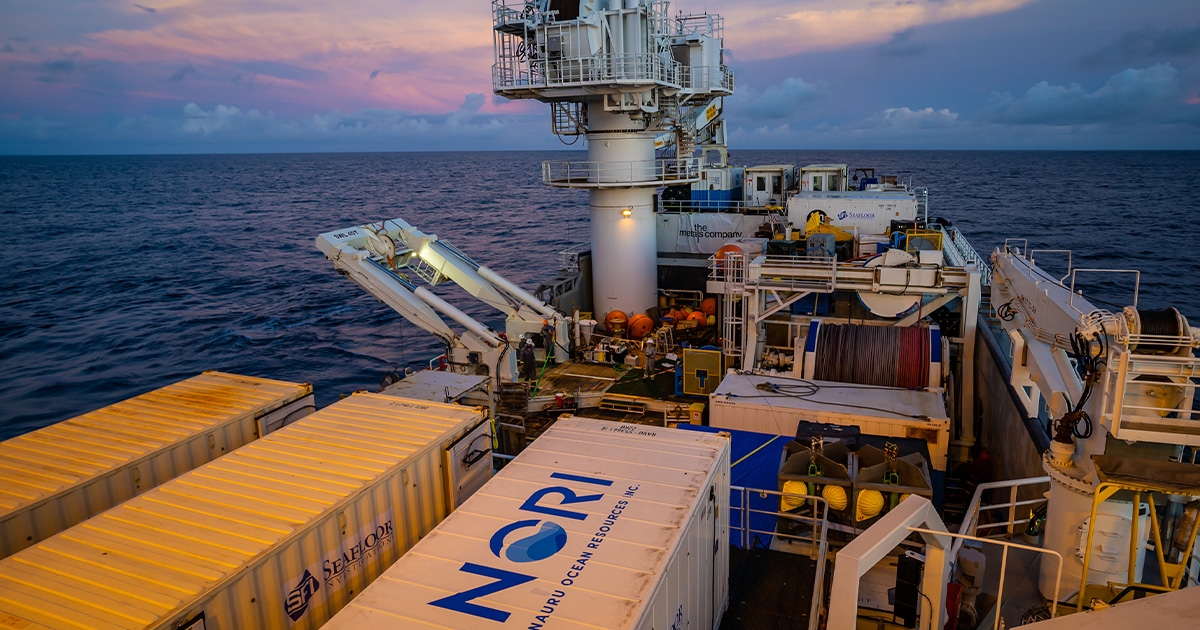TMC Subsidiary NORI Commences Monitoring of the Environmental Impacts of Pilot Nodule Collection System Trials in the Clarion-Clipperton Zone

The Metals Company, an explorer of lower-impact battery metals from seafloor polymetallic nodules, has announced that a multidisciplinary team of independent scientists from leading research institutions around the world and industry-leading contractors has commenced the next phase of an extensive environmental baseline and impact monitoring campaign in preparation for the Company’s subsidiary NORI’s ongoing pilot nodule collection system trials in the NORI-D area of the CCZ.
Aboard a dedicated 103-meter-long monitoring vessel, scientists recently conducted pre-disturbance monitoring studies on a sub-section of the NORI-D exploration area to establish an environmental baseline before NORI’s offshore strategic partner, Allseas, tests a system consisting of a prototype nodule collector at the seafloor connected to a riser system to bring nodules to the surface production vessel, Hidden Gem.
Researchers use a range of high-tech equipment including bespoke tools developed by MIT, Scripps and Sequoia Scientific to characterize the behaviour of sediment plumes generated by the prototype collector on the seafloor; three dedicated moorings, current meters with acoustic modems to provide real-time seafloor current data and a large array of other specialized equipment which together represents the most extensive suite of instruments ever deployed for a single program in the deep ocean. The current campaign requires the coordination of 250 people across three vessels and also marks the initial trials of components of TMC’s Adaptive Management System — being developed in partnership with Kongsberg Digital — which is expected to enable near-real-time 3D visualization in the deep sea and the simulation and analysis of the impacts of NORI’s proposed operations at depths of 4kms.
The Company’s Environmental Program Manager, Dr Michael Clarke, said: “Testing of a fully integrated nodule collection system is a landmark event in the progression of our nascent industry. The environmental data we collect from the test will be key to defining and quantifying the key environmental impacts of our nodule collection process, which up to this point have been subject to speculation and conjecture.”
Having established a baseline of the NORI-D collector test area, scientists will proceed to monitor the environmental impacts of deployment and testing of the fully integrated nodule collection system. They will also undertake post-collection surveys to compare the status of the environment before and after the test. The data collected, together with many terabytes of existing baseline data collected by NORI throughout 16 offshore campaigns, will form the basis of NORI’s application to the International Seabed Authority for an exploitation contract, which the Company expects to submit in the second half of 2023.
Last month NORI announced that it received the ISA’s recommendation to commence its pilot nodule collection system trials in the CCZ after its review of the Environmental Impact Statement (EIS) and Environmental Monitoring and Management Plan (EMMP). Trials of prototype nodule collectors have been successfully conducted by several ISA contractors including BGR and GSR in the recent years. NORI’s tests will mark the first time an integrated nodule collection system — including nodule riser — has been trialed in the Clarion Clipperton Zone since the 1970s, when oil, gas, mining and industrial majors including Shell, BP, Rio Tinto (Kennecott), US Steel, INCO (Vale) and Sumitomo successfully conducted pilot test work, collecting over 1,500 tons of nodules.

